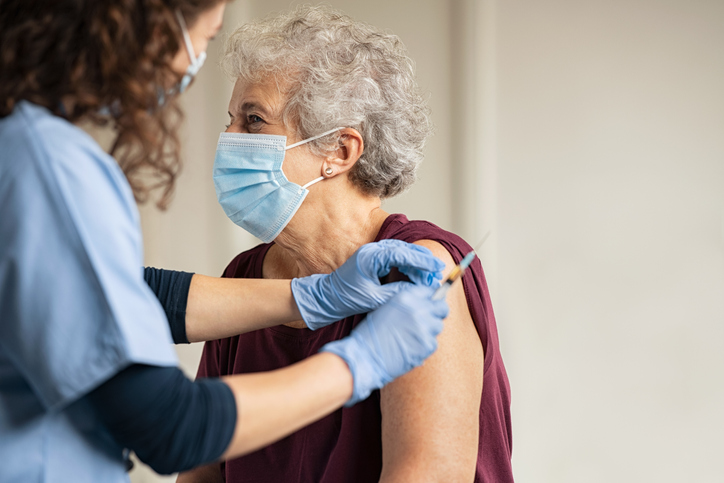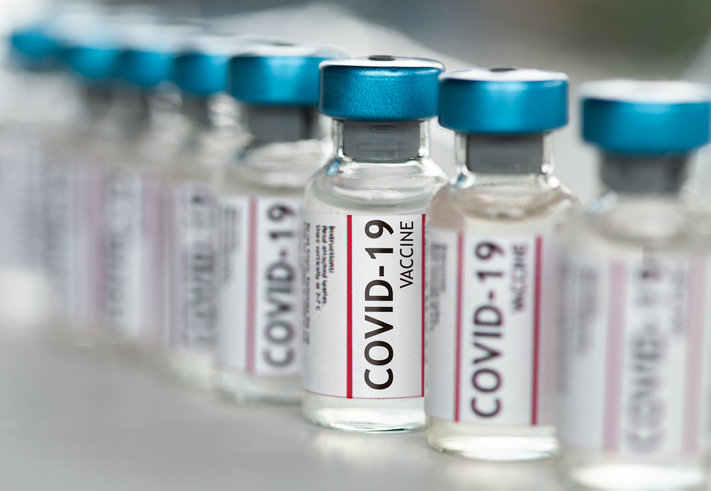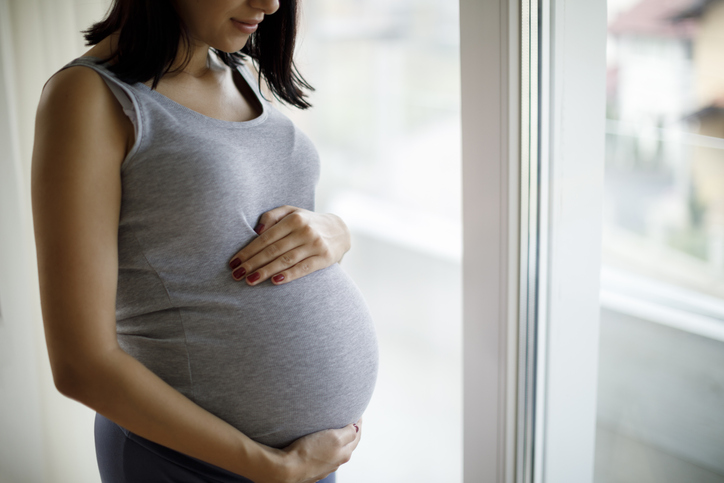Content Sections
- ● Q1. How many people?
- ● Q2. How many vaccines?
- ● Q3. What’s new with the vaccine frontrunners
- ● Q4. Vaccines for what purpose?
- ● Q5. Might covid vaccines contribute to ‘pathogenic priming’?
- ● Q6. Could covid-19 vaccines be more risky for pregnant women?
- ● Q7. What are the regulators who approved covid vaccines saying?
- ● Q8. How safe do covid vaccines appear in the real world?
- ● UK update 05 February 2021
- ● A final word
By Rob Verkerk PhD; founder, executive & scientific director
Updated: 08 February 2021
>>> Download article as printable PDF (18 pages)
"Medical science has made such tremendous progress that there is hardly a healthy human left."-Aldous Huxley, author of Brave New World (1932)
With a widely-held intention by governments to vaccinate 7 billion people on the planet with experimental covid vaccines, consenting to vaccination – or not – is something nearly every one of us will have already considered, or will be currently considering.
This article aims to consolidate what we consider to be some of the most relevant available information that is currently available on risks, benefits and adverse events. It is usually interpretations of the balance between these factors that leads to confidence or hesitancy. As advocates of natural health, we believe now is not the time to blindly accept and trust what is offered without considering how much data is, or isn’t, available, or the quality or relevance of those data.
We’ve approached this by trying to answer, in a manner that we hope both lay and professional people can understand, eight questions that are based on those our readers have been asking us. Where possible, we’ve referenced our data sources using hyperlinks. In many cases the data we would hope to have been able to access is just not available.
Given the ‘next generation’ synthetic biology platforms on which the experimental frontrunner vaccines are based, platforms that have never been rolled out at scale before, we cannot rely on historical safety and risk profiles of previous, more conventional vaccines. Having opened with an Aldous Huxley quote, it is time for another – as a reminder of the importance of critical thinking and properly informed decisions in the real, dystopian or utopian (take your pick) ‘Brave New World’.
“People will come to love their oppression, to adore the technologies that undo their capacity to think”- Aldous Huxley, Brave New World (1932)
Q1. How many people?
The proposed 7 billion to be targeted represents some 90% of the current 7.8 billion people currently alive. It’s a tall order. In itself, it’s also an intention that might be worthy of revision, even if it is only on the much-publicised grounds that the covid-19 vaccines are being prioritised for older, more vulnerable people.

Putting aside any vulnerabilities caused by obesity or underlying diseases, we should remind ourselves that, based on our review of 2020 population data on Our World in Data, 84% of the planet’s population currently live in ‘Less Developed Regions’ (6.52 of 7.79 billion), such as Sub-Saharan Africa and southern Asia, while 41% of the world’s population is an age category (under 25-years-old) that is widely viewed as not susceptible to serious covid-19 disease. More than that, globally, the most vulnerable populations are among those over 65-years-old, and these (727.5 million) represent just 9% of the world’s population.
Looking now at the 1.27 billion living in ‘More Developed Regions’, only 246.6 million are in the over-65s. The population of Europe and North America that is currently prioritising covid vaccination, only represents 14% of the global population and the over-65s in this region, equates to just 3% of the global population.
Q2. How many vaccines?
Many people have become familiar with 3 vaccines, all based on novel, ‘next generation’, rather than ‘classical’, platforms. Two of them are messenger RNA (mRNA) based, one by Pfizer/BioNTech, the other from Moderna. These contain a synthetic sequence of messenger RNA that is concealed within novel lipid nanoparticle delivery systems that, after entering the ribosomes (that house the transcription machinery of the cells) of the muscle cells into which the vaccine is injected then instruct the muscle cells to produce a copy of the spike protein of the virus. In essence, it means that the human body becomes the vaccine factory and there is no longer a need to grow the virus on hens’ eggs, the current production system still widely used for many more classical vaccines like the seasonal flu vaccine.
The third frontrunner is the Non-Replicating Viral Vector vaccine by the AstraZeneca/Oxford University group, using a genetically modified (non-replicating) chimpanzee common cold Trojan horse into which is inserted a synthetic sequence of spike protein of the SARS-CoV-2 virus.
However, according to the World Health Organization’s Draft landscape of COVID-19 candidate vaccines there are currently 64 candidate vaccines in clinical development with a further 173 in pre-clinical development, these relying on 8 different vaccine platforms in addition to the two already relied on by the 3 frontrunners. Most (31%) rely on the more conventional protein subunit platform that has been widely used for seasonal influenza vaccines.
Many will likely not make it through to commercial release – but expect a few more to join the first three out of the dock in the coming months and years.
Q3. What’s new with the vaccine frontrunners
The short answer? Almost everything. Now for a slightly deeper dive. This is the first time in human evolutionary history that synthetic genetic material has been injected at scale into human beings. We have of course been exposed to genetic material from viruses and other organisms because bacteria and viruses facilitate this process naturally. Indeed, viruses have been critical to the evolutionary development of all species present on our planet, acting overall as friends more than foes, despite their negative perception by humans usually only as pathogens. In fact, probably around 8% of the human DNA originates from viruses, most of it having little apparent effect. One obvious exception is the human endogenous retrovirus (HERV) protein, syncytin-1, that is expressed and is responsible for the formation of the mammalian (including human) placenta. Yes, without those ‘fossil’ retroviruses, none of us would be here! Extraordinarily, syncitin-1 is also almost a dead ringer for a fragment of the SARS-CoV-2 spike protein – an issue we discuss in Question 6 below – on potential risks for pregnant women (and women who don’t know they’re pregnant).
Then, in the early 1980s, we saw the first developments in genetic engineering, but of crops not humans. A soil-borne bacterium that is able to deliver DNA from a diverse range of organisms into plants, Agrobacterium tumefaciens, was used to create the first ‘transgenic plants.’ The bacterium is still used in some areas of crop biotechnology today.
But, for those of us who have an overriding respect for nature and its ways, there is a big difference when nature does its thing, exchanging genetic material between species, because nature has had some experience doing this particular thing over the last 3.5 billion or so years.
Humans, by contrast, have been exploring genetic engineering for less than 40 years – that’s around 0.000001% of this time frame. Another big difference is the public has had an ongoing opportunity to offer its opinions on genetically modified organisms (GMOs) used as human food and animal feed over the majority of this time.
In democracies, elected representatives have often been able to influence policy around GMO cultivation, animal rearing, trade, labelling and consumption. Many have decided it’s not for them. As the large UN-funded International Assessment of Agricultural Knowledge, Science and Technology for Development (IAASTD) report (‘Agriculture at a Crossroads’) revealed back in 2008, scientific consensus suggested GMO crops would not make a net positive contribution to the global food security challenge. Other than controversial and often conflicting data around safety and environmental risks, one of the resounding concerns remains with the centralisation of agricultural resources (notably in the form of GM seeds) in the hands of a few (the companies that own the intellectual property). This desire to control the food supply is just one fact that has contributed to Monsanto’s rating as one of the most reviled companies in the world.
There has been no public debate on the ethics around introducing synthetic genetic material directly into humans by injection, bypassing the human gut, that, during our evolution, has been the primary interface with the capacity to determine what molecules, organisms or viruses are friend or foe, a task that is performed admirably by a coalition of commensal human and microbial cells (our microbiome). Democracy has been suspended as the world is held for months on end in an emergency state, supported by the World Health Organization’s continued declaration of pandemic status. Selective reporting by the media and censorship of social media have obfuscated any possibility of scientific and public discourse. Any discourse that has occurred has been easily disregarded by the establishment as pseudoscience or conspiracy theory. This doesn’t bode well for an open or transparent world in which diverse views and ideas are shared with the hope of reaching consensus. It is divisive and polarising.
There has been grossly inadequate research on the effects of the nanomaterial delivery systems being used in the mRNA vaccines. It is quite extraordinary, and certainly disproportionate, that any food or supplement manufacturer that wants to deliver nano-sized (sub 100 nm diameter) particles via the oral route, has to go through extensive and onerous testing to verify the safety of their nano-sized particles, even if they are chemically identical to their non-nano counterparts. Yet foods are inherently many times safer than drugs and are not administered directly to the circulation like injected vaccines. So how did the vaccine makers manage to fast-track the onerous process of proving safety of their nanomaterial delivery system for their synthetic mRNA when so much is asked of food manufacturers and all of the opinions and decisions by regulators are placed in the public domain? Is it anything to do with that well-known revolving door?
In the EU, the guidance for nanotechnology use in food and feed can be found here. The underlying premise for rigorous pre-market testing is that the very small size of particles can change the safety and risk profile of a given substance quite dramatically, often making the respective ingredients more toxic. It seems perverse that the public has been offered little or no information on the safety testing that underpins the BioNTech and Moderna developed mRNA nanotech lipid delivery system for their respective synthetic mRNA sequences that bypass the human gut altogether and are injected directly into the circulation.

Some have mooted the potential for mRNA vaccines to alter a vaccinated person’s genome (DNA). Anyone who says that this definitely will or will not occur should probably not be trusted. Is there a theoretical possibility that this could occur? Yes, in our view. Do we currently have enough data to be able to explore the potential of this happening? No. Might we find some transgenic humans have been created unwittingly by the current mass vaccination programme? This is something that cannot be ruled out, but it would be unlikely to be known for many years. The theoretical basis for the possibility of this happening is complex, but the essential tenets of it go something like this: The synthetic mRNA of the vaccines could be reverse transcribed by reverse transcriptase enzymes that are used by certain viruses like HIV and hepatitis B. These enzymes convert the RNA to double-stranded DNA that could, in theory, be integrated into the DNA held within the nucleus of the cell by another enzyme, retroviral integrase, also produced by retroviruses like HIV.
This might seem fanciful to some as it could be argued this can’t happen otherwise it would have already happened with other DNA or RNA viruses, including the existing coronaviruses. The more open-minded might reply by suggesting this has indeed happened during human evolution, that is why we humans have viral genetic material within our genome. It is also part of the pathology associated with HIV-AIDS, as the reverse transcribed RNA of HIV is converted to double-stranded DNA and then linked by retroviral integrase to the DNA of the affected human.
But can we breathe easy because this doesn’t appear to happen as far as we know with the coronaviruses that infect humans, of which 7 are currently known? This, in our view, is the biggest informational safeguard we have. Should we rest on that and be thankful we’re not dealing with another retrovirus like HIV, but rather a coronavirus that’s very similar to one that can give us common cold? Probably not. We don’t know that cells and enzymes that have been mixing it up for millennia won’t respond differently to lab-grown genetic material. We don’t know if there might be a longer duration of exposure to retroviruses and their enzymes for mischief to occur. We don’t know how the shielding of RNA by a synthetic lipid nanoparticle as compared with a natural protein shell of a virus alters the process. In summary – it doesn’t seem scientifically plausible to entirely reject the possibility that integration of synthetic genetic material from these ‘next-generation’ covid vaccines might occur altogether. But no doubt, any public discussion of the subject among the scientific community will continue to be considered heresy, or at least conspiracy theory.
A final point to consider is that ‘we’ – the establishment scientific and medical community at least – have already opened the door to ‘targeted gene delivery’ that integrates transgenes into the human genome. It’s a potentially risky business and demands that ‘genomic safe harbours’ are found so as not to upset the coding systems of the human genome that have evolved over hundreds of thousands of years. Cancer and many other diseases might be the price to pay if mistakes are made. We argue that our lack of understanding of the sophistication of nature means that mistakes could well occur and by the time such mistakes are discovered it may be too late. This would also be one reason why trying to expose almost the entire human population to experimental synthetic biology vaccines appears like a high risk operation – and the public is not being informed about the potential risks involved.
Q4. Vaccines for what purpose?
There is a whole lot of confusion over what the purpose of the covid vaccines is. Many assume vaccination with the current crop of covid vaccines is intended to create population-wide herd immunity – a topic we considered in some detail last week.
The reality is there are no reliable data which can be used to confirm or refute this. The Phase 3 trial designs deliberately excluded considering how effective the vaccines might be in reducing transmission. The results cannot tell us anything about this. Taking the Pfizer vaccine as an example, nearly 44,000 people across 150 clinical trials sites in United States, Germany, Turkey, South Africa, Brazil and Argentina were involved in the Phase 3 trials. But only 170 of these (0.4%) were exposed to SARS-CoV-2, 8 being in the treatment group, 162 in the control group (hence the over 90% effectiveness claims). Of the 8 that benefited, Pfizer have also claimed over 94% effectiveness among the over-65s, but this would have represented a tiny subset (less than 8!) that couldn’t possibly represent the genomic and phenotypic variation that’s out there in the community.
The UK government guidance (updated 20 January 2021) makes clear that the purpose of the vaccine is simply to “reduce the chance of you suffering from COVID-19 disease.” It correctly makes no assumptions about potential effects on transmission.
Only time will tell – through further follow-up of Phase 3 trials and post-marketing surveillance – how different individuals in the population at large will respond to the vaccine. Age, gender, ethnicity, disease status, nutritional status, immune system status and previous vaccination histories, are just some of the many factors that could influence response to the vaccines. How long will neutralising antibody levels remain elevated? Will memory T cells be primed ready to deliver long-term protection after antibodies wane? How will the immune systems of those vaccinated respond to changing variants of the virus over time?
South African scientists have already warned that the covid vaccines “may need updating to protect against the new [South African] variant”. These are just a few of the many known unknowns.
It will likely take several years to get a solid view on how much the vaccines reduce transmission and it will be increasingly hard to separate the effects of one vaccine from another. It also becomes much more complicated to discern the effects of the vaccine during a waning pandemic or epidemic, something that, in our view, is undoubtedly already happening.
It is the lack of knowledge around the effects of the vaccines on viral transmission that is causing national authorities to continue to recommend the wearing of masks or the maintenance of social distancing.
In many respects, the vaccine is not being rolled out in the knowledge that it will reduce transmission and elicit herd immunity. It is more like a prophylactic treatment, but one that has the might of governments and international agencies behind it. More than that, the manufacturers are, ironically, themselves immunised from public prosecution in the event of no-fault vaccine injury. The same can’t be said for the companies responsible for cancer or heart disease treatments that kill many more people every year.
The fact that the covid vaccines are intended as prophylaxis – in other words to prevent severe covid-19 disease in the event of infection with SARS-CoV-2 – means that they should be compared with other forms of prophylaxis. It would be remiss then to not consider here the I-MASK protocol proposed and being implemented by the Frontline COVID-19 Critical Care Alliance in the USA. This is particularly timely now that the National Institutes of Health (NIH), at least, has finally (on 14 January 2021) approved the use of the key agent in the I-MASK protocol, the anti-parasitic drug ivermectin, for treatment of covid-19.
Q5. Might covid vaccines contribute to ‘pathogenic priming’?
‘Pathogenic priming’ is a term that is more scientifically described as antibody-dependent enhancement (ADE) of disease. In short form, it means that after infection or vaccination, a person can experience more serious, enhanced disease after being exposed to the pathogen to which they have either become immune, or that the vaccine was intended to protect against. When the enhancement is specifically related to a vaccine, it’s often called vaccine-associated hypersensitivity (VAH).
It’s an unsettling reality because it’s caused by the antibodies that normally do a great job in quelling the pathogen. It doesn’t occur in the case of most viruses (or vaccines), but has been found to occur in the case of 40 viruses. Among these are dengue viruses and coronaviruses, including SARS and MERS. The mechanisms by which it occurs are both varied and complex, but central is either an enhancement of viral entry and subsequent inactivation of innate immune cells, and/or the enhancement of infection via a key receptor on immune cells known as the Fcγ receptor (FcγR) to which Fc portions on antibodies bind. Five different mechanisms causing this to happen have been identified so far.
VAH or ADE is one reason why dengue vaccines as well as those for SARS and MERS, the latter being caused by coronaviruses, haven’t made it commercially. They were just too dangerous, no longer necessary (because SARS and MERS had waned naturally) or they were too late in being delivered. There was no Operation Warp Speed for SARS and MERS.
There should be genuine concern over the risk of VAH/ADE with covid vaccines, yet the results from Phase 3 trials that triggered emergency authorisation around the world are not sufficient to properly evaluate its risk. The fact that only hundreds (not tens of thousands) of people for each vaccine who have been vaccinated have also been exposed to wild SARS-CoV-2 is not sufficient to know if particular sub-groups of people could be susceptible to disease enhancement following exposure to the virus.
Nowhere near enough time has elapsed either. The Phase 3 trial results are only enough to know that VAH/ADE isn’t going to affect the majority and that’s at least something. But those in the community who are currently being vaccinated with the experimental vaccines are in essence the ‘guinea pigs’, and the existence or the extent of the problem will not be known until many of those vaccinated have already been exposed to the virus. That’s months and years away.
Concerns are sufficient for Drs Anne Arvin, Herbert Virgin and colleagues from Vir Biotechnology in San Francisco and Stanford, writing in one of the world’s most prestigious journals, Nature, to have stated in July 2020 that ADE is “...a general concern for the development of vaccines and antibody therapies because the mechanisms that underlie antibody protection against any virus have a theoretical potential to amplify the infection or trigger harmful immunopathology. This possibility requires careful consideration at this critical point in the pandemic of coronavirus disease 2019”.
This concern was largely discounted by Scott Halstead and Leah Katzelnick writing in the Journal of Infectious Diseases in December. These latter authors confidently exclaim that human coronavirus diseases like SARS-CoV-2 “...lack the clinical, epidemiological, biological, or pathological attributes of ADE disease exemplified by dengue viruses”. However, there is a plentiful literature showing lung pathology and other signs of VAH/ADE in experimental trials on animals with coronavirus vaccines targeting SARS and MERS. A summary is provided in a review by Raphaël Zellweger and colleagues at the International Vaccine Institute in Korea in the journal, Expert Review on Vaccines.
Given that frontline and key workers are among the priority groups for vaccination – have the vaccination policy groups in governments considered the potential consequences of VAH/ADE rearing its ugly head and side-lining or taking out these workers on which so many depend? Almost certainly. Have they acted on these concerns to minimise such risks? Clearly not.
Q6. Could covid-19 vaccines be more risky for pregnant women?
This potential has been getting a lot of airtime on ‘non-mainstream media’ (which is a term that describes that subset of the internet and social media that has yet to be de-platformed or is reliant on emerging platforms that are independent of the mainstream).

It’s a problem because many women don’t know they’re pregnant for some months (my own daughter being one of them).
There is clear evidence that pregnant women can be more vulnerable to influenza, and this is linked to the relic of retrovirus protein that’s responsible for the evolution of humans through it’s role in triggering the formation of the female mammalian placenta.
But the main discussion on syncytin-1 and infertility risk has centred on a notion that was put forward by Dr Wolfgang Wodarg, a German physician, epidemiologist (and politician), along with former Vice President and Chief Science Officer for Allergy & Respiratory at Pfizer, Dr Mike Yeadon, in their stay of action submitted to the European Medicines Agency (EMA).
No one can reliably know one way or another what the real risk is because pregnant women were excluded from the trials of the three frontrunner vaccines. Accordingly the vaccines are not advised for pregnant women in the UK. The Pfizer mRNA vaccine fact sheet states: "Available data on Pfizer-BioNTech COVID-19 Vaccine administered to pregnant women are insufficient to inform vaccine-associated risks in pregnancy". A similar statement is made on the US fact sheet for the Moderna mRNA vaccine, however we've seen many reports of covid vaccines being adminstered to pregnant women in the USA.
There is also a potential mechanism for an impact on fertility, although regulatory information, for example with the AstraZeneca vaccine, tries to brush it under the carpet:
“Preliminary animal studies do not indicate direct or indirect harmful effects with respect to pregnancy, embryofetal development, parturition or post natal development; definitive animal studies have not been completed yet. The full relevance of animal studies to human risk with vaccines for COVID-19 remains to be established.”
The theoretical basis of a concern goes something like this: during evolution, a group of retroviruses inserted coding in female mammalian DNA that is responsible for placental formation. As mentioned in Q3, it’s called syncytin-1 and without it, female mammals, including humans, can’t get pregnant. That piece of coding is almost identical to a segment of the SARS-CoV-2 spike protein so if antibodies were to take out syncytin-1, women could become infertile.
Again, could this happen with a strong neutralising antibody response following exposure to the real virus? Potentially. Has such an effect been recorded? Not to our knowledge, but it’s early days. Could the vaccine engender a different kind of immune response to naturally-acquired infection? Potentially. It’s definitely something that requires keeping a very close eye on and it’s too early, in our view, to completely exclude the effects of severe SARS-CoV-2 infection or vaccination on fertility reduction in some exposed women or girls.
Q7. What are the regulators who approved covid vaccines saying?
When you buy an over-the-counter medicine, you’ll be familiar with the product or patient information leaflet (PIL) that comes with it. The details of what’s contained in it is something that’s thrashed out between the licence holder and the regulator that authorises the drug.
Astonishingly, we are finding almost no one is given sight of the product information leaflets for any of the emergency-authorised vaccines.
So we thought we’d provide you links so you can read some of them prior to making a choice over vaccination. Being aware of the information that is known to the maker of the vaccine and the regulators that have authorised the vaccine in question is really the bare minimum of information you should be aware of prior to giving consent.
>>> Pfizer information leaflet, UK: Pfizer PIL
>>> Pfizer fact sheet for recipients and caregivers, USA
>>> Pfizer fact sheet for healthcare providers administering the vaccine, USA
>>> AstraZeneca information leaflet, UK
>>> Moderna fact sheet for healthcare providers administering the vaccine, USA
>>> Moderna information leaflet, EU
>>> Moderna information leaflet
The UK government has issued guidance for people to help them know what to expect following vaccination. It contains a much narrower range of common adverse reactions that those listed on the Pfizer UK leaflet or USA fact sheet (above).
By way of example, the Pfizer UK leaflet that most people in the UK vaccinated with the Pfizer vaccine will never see, lists the side effects as follows, at the stated frequencies:
Very common: may affect more than 1 in 10 people
- pain at injection site
- tiredness
- headache
- muscle pain
- chills
- joint pain
- fever
Common: may affect up to 1 in 10 people
- injection site swelling
- redness at injection site
- nausea
Uncommon: may affect up to 1 in 100 people
- enlarged lymph nodes
- feeling unwell
Rare side effects: may affect up to 1 in 1,000 people
- temporary one sided facial drooping
Not known (cannot be estimated from the available data)
- severe allergic reaction
The US fact sheet on the Pfizer vaccine describes the chances of a severe allergic reaction as “remote” but goes on to say:
“A severe allergic reaction would usually occur within a few minutes to one hour after getting a dose of the Pfizer-BioNTech COVID-19 Vaccine. For this reason, your vaccination provider may ask you to stay at the place where you received your vaccine for monitoring after vaccination. Signs of a severe allergic reaction can include:
- Difficulty breathing
- Swelling of your face and throat
- A fast heartbeat
- A bad rash all over your body
- Dizziness and weakness
These may not be all the possible side effects of the Pfizer-BioNTech COVID-19 Vaccine. Serious and unexpected side effects may occur. Pfizer-BioNTech COVID-19 Vaccine is still being studied in clinical trials.”
All recipient and vaccinator facing material advises that adverse reactions are reported to national registers set up to receive adverse event reports.
Q8. How safe do covid vaccines appear in the real world?
The UK medicines regulator has yet to report (see update below) on the adverse event data it has been collecting through the dedicated Yellow Card system. Bloomberg reported June Raine, interim chief executive officer of the MHRA, saying that adverse event reports are coming in “really thick and fast now,” tempering this statement with another, “...there’s nothing unusual in what we’re seeing.” Probably best to make judgments when more data have come in.
At the time of writing (20 January), the CDC COVID Data Tracker tells us that 15.5 million doses of covid-19 vaccines have been administered in the USA, with 14.3 million people having received one or more doses.
In the UK, at the same time, 4.6 million had received their first dose, with 460,625 being ‘fully vaccinated’ with two doses.
That’s a lot of people – and in just two countries – many more people than were exposed to all three frontrunner vaccines in the three sets of Phase 3 trials. Given the abbreviation of the time frames normally used to study safety and effectiveness, it is critical that adverse events reporting is as transparent as possible so that the public, as well as health professionals and politicians, can be as well informed as possible.
In this light, adverse event reporting is being prioritised and most countries have established dedicated adverse event reporting systems for the covid-19 vaccines.
Some are listed in the table below:
Table. Selected adverse event reporting systems for covid-19 vaccines
|
Country |
Organisation |
Link |
Transparency |
|
Australia |
Therapeutic Goods Administration |
https://www.tga.gov.au/database-adverse-event-notifications-daen |
No information publicly available |
|
Canada |
Government of Canada |
https://www.canada.ca/en/public-health/services/immunization/canadian-adverse-events-following-immunization-surveillance-system-caefiss.html#s2 |
|
|
EU |
European Medicines Agency (EMA) |
No information publicly available |
|
|
France |
Ministére des Solidarités et de la Santé |
No information publicly available |
|
|
Germany |
Federal Institute for Drugs and Medical Devices (BfArM) |
No information publicly available |
|
|
Israel |
Ministry of Health |
[unknown] |
Israel has allegedly agreed to give patient data to Pfizer in return for access to vaccines |
|
Italy |
Italian Medicines Agency |
https://www.aifa.gov.it/en/content/segnalazioni-reazioni-avverse |
No information publicly available |
|
Malaysia |
National Pharmaceutical Regulatory Agency |
No information publicly available |
|
|
Norway |
Norwegian Medicines Agency (Statens legemiddelverk) |
||
|
Sweden |
Swedish Medical Products Agency |
||
|
UK |
MHRA |
No information publicly available |
|
|
USA |
Centers for Disease Control |
VAERS database publicly accessible |
You will notice that the majority of authorities for which we’ve been able to find data are not putting data on collected adverse reactions into the public domain. The USA, Canada, Sweden and Norway are among the exceptions.
Given that, of those offering some transparency of the adverse event data, the USA has by far the most doses administered, we have carried out some analyses of the US Vaccine Adverse Event Reporting System (VAERS) data.
So far, of 15.7 million doses delivered, 7098 adverse events have been reported in total. That’s an adverse event rate (AER) of just 0.045% which is in the order of 100 times less than that recorded in clinical trials. It likely represents significant underreporting, a problem that has long been recognised.
>>> Covid vaccines - like apples and oranges
>>> ‘Promising’ and ‘safe’ Moderna vaccine trial causes severe adverse events
The VAERS data suggests that so far 55 people in the USA have died following vaccination, 96 have experienced life threatening reactions and 1388 have required emergency treatment.
We’ve also compared, using source data in the VAERS database, the very limited available data on covid vaccines with flu vaccines, using the metric of AERs per dose. The results of our analysis (bearing in mind the limited data on covid vaccines) showed:
- The risk of death from a covid vaccine is 9-fold greater than with a flu vaccine during the 2020 season
- Emergency room treatment was 16.6 times more common following a covid vaccine dose
- The risk of a life threatening adverse reaction was over 12 times greater for covid rather than flu vaccines
All of these abstract data pale into insignificance when you read the stories of those who have or are still experiencing ongoing severe reactions or have been devastated by the loss of a loved one following vaccination. We’re receiving reports from those describing adverse reactions by friends or family members.
Following are three examples that came in yesterday:
“My daughter works as a care worker. Last Thursday 14th the Oxford/AstraZeneca vax was administered to staff and the elderly residents in the care home. My daughter declined it as she has allergies. The following day 10 staff members called in sick with a variety of problems - some had blinding headaches, some stomach cramps, dizziness, and one with projectile vomiting. My daughter rang in tears that night as all the residents - around 50 - had gone downhill. They couldn’t get out of bed, wouldn’t eat or drink, and were lethargic. She had the weekend off and went into work yesterday - Mon 18th - to discover that one of the residents had died. She said he was in his 70s and pre-vaccine was lively and chatty with no health issues. Apparently, he had anaphylactic shock and then a heart attack. They are due to have their second jab in 3 weeks. It’s really worrying.”
"My father-in-law died 2nd Jan, two weeks to the day after having the jab. He was 80, had COPD and shingles and yet they still gave him the jab (?) and his breathing worsened after it. He died very suddenly. We found out today there will be no post-mortem and his GP is writing it up as a heart attack as he apparently also had atrial fibrillation (his wife not aware of this). She then saw this story in the Telegraph and wondered if any increased deaths will be swept under the carpet."
"A friend has covid since being vaccinated and so do 14 of her coworkers in the care home where she works! All since the Pfizer vaccine. They had had 2nd jab a week last Friday, tested positive on the Mon when they were routinely checked & all ill by Weds. All are off sick with covid."
We've actually heard of several other cases like this last one, in which PCR or Rapid tests were made of care home residents who had recently been vaccinated and all were found to be positive. As a result of the positive tests, the residents were treated as if they had covid-19 disease and were forced to self-isolate, and they went on to experience many symptoms common to covid-19 disease so were diagnosed as having the disease.
This may be not only an incorrect diagnosis, but an incorrect, forced intervention. Let me try to explain what else could have been going on.
The PCR and Rapid tests hunt down the nucleic acid sequence of the spike protein. Assuming all the tests were found to be positive, there are 5 possibilities:
- SARS-CoV-2 virus (with infective potential) has been accurately detected
- Fragment(s) of SARS-CoV-2 virus have been detected, with no infective potential (this is more likely to be the case if the cycles threshold (CT) value of the PCR tests in question is in excess of 33)
- Fragment(s) of closely related coronaviruses have been detected (again, with no infective potential)
- The result was a false positive (on 13 January 2021, the World Health Organization changed its guidance to remind those testing that low prevalence will contribute to raised false positive rates, something we pinpointed in September 2020)
- The PCR or Rapid test had responded to the antigen in the vaccine (i.e. a copy of the spike protein made by the muscle cells following instructions given to them by the coded messenger RNA in the Pfizer or Moderna vaccines, or the synthetic copy the spike protein in the case of the AstraZeneca vaccine)
Furthermore, the symptoms that looked just like covid-19 symptoms, could also readily have been common side effects of vaccination, as very common side effects include: fever, chills, headache, muscle pain, tiredness and joint pain. These side effects look so much like real infection because they are the result of the triggering of pro-inflammatory cytokines (chemical messengers used by the immune system) that are associated with all inflammatory reactions. They occur whenever the immune system is revved up in an effort to deal with a foreign invader, even if this 'foreign' entity has come from our own muscle cells (Pfizer and Moderna) or is entirely synthetic (AstraZeneca).
Had the residents been given sight of the product information leaflet for the vaccine. they would have been aware that these symptoms could be related to the vaccine, and not covid-19 disease. The health professionals in charge could have perhaps done a better job engaging with their medical and scientific knowledge and clinical experience.
Even more that that, such critical thinking will helps us to avoid knee-jerk, programmed responses that cause unnecessary anguish among care home residents - or anyone else for that matter who effectively draws the short straw in medical care.
Closed Facebook groups have sprung up offering a safe space for people to report their reactions, one such group, having nearly 42,000 members already. In the interests of privacy we are not sharing these testimonials, however, it appears that some people have experienced serious adverse reactions such as uncontrollable tremors, anaphylactic shock, seizure, paralysis and death within hours of receiving the jab. Whilst these are uncorroborated anecotes, these types of reactions appear to have been experienced by many people in the group.
Many might argue that if the rate of AERs does not rise significantly from the present rate, and the vaccine is found to be effective in preventing infection or serious disease, the collateral injury of some people is justified.
Our sense is that we are a long way from knowing that just now and it is imperative that all adverse reporting systems are made fully transparent to the public, as we propose in our vaccine transparency manifesto. Our Transvac vaccine transparency tool revealed transparency of just 35% and 30% for the Pfizer and Moderna vaccines respectively last December.
UK update 05 February 2021
The following three tables summarise adverse event data released by the UKMHRA on the 5th February 2021.
Table 1: Current status of adverse event reports (AER) from UK Medicines & Healthcare products Regulatory Agency (MHRA)
| Company | Total No of vaccine doses | AER total | AER rate % |
| Pfizer/BioNTech | 5,900,000 | 49,472 | 0.8 |
| AstraZeneca | 1,500,000 | 21,032 | 1.4 |
Source data: MHRA as at 05 February 2021 (https://www.gov.uk/government/publications/coronavirus-covid-19-vaccine-adverse-reactions)
Table 2: Summary of important AERs for Pfizer/BioNTech vaccine (UK)
| Pfizer/BioNTech | No of reactions | % total AERs |
| Headache | 4,570 | 9.2 |
| Fatigue | 3,230 | 6.5 |
| Pyrexia | 3,173 | 6.4 |
| Nausea | 2,365 | 4.8 |
| Myalgia | 2,280 | 4.6 |
| Chills | 1,994 | 4.0 |
| Pain in extremity | 1,530 | 3.1 |
| Arthralgia | 1,414 | 2.9 |
| Dizziness | 1,278 | 2.6 |
| Pain | 1,176 | 2.4 |
| Lymphadenopathy | 969 | 2.0 |
| Malaise | 779 | 1.6 |
| Death | 107 | 0.2 |
| Total of other | 24,714 | 50.0 |
Source data: MHRA as at 05 February 2021 (https://www.gov.uk/government/publications/coronavirus-covid-19-vaccine-adverse-reactions)
Table 3: Summary of important AERs for Ox/AstraZeneca vaccine (UK)
| Ox/AstraZeneca | No of reactions | % total AERs |
| Headache | 2,589 | 12.3 |
| Pyrexia | 2,446 | 11.6 |
| Chills | 1,451 | 6.9 |
| Fatigue | 1,281 | 6.1 |
| Nausea | 1,171 | 5.6 |
| Myalgia | 1,087 | 5.2 |
| Arthralgia | 678 | 3.2 |
| Pain | 612 | 2.9 |
| Dizziness | 551 | 2.6 |
| Pain in extremity | 441 | 2.1 |
| Vomiting | 407 | 1.9 |
| Hyperhidrosis | 269 | 1.3 |
| Death | 34 | 0.2 |
| Total of other | 8,049 | 38.3 |
Source data: MHRA as at 05 February 2021 (https://www.gov.uk/government/publications/coronavirus-covid-19-vaccine-adverse-reactions)
A final word
Informed consent is a legal requirement for any medical intervention in all jurisdictions. It also builds trust and a fiduciary relationship between the recipient and the administrator of the proposed intervention. When it works well, it’s about as far away from coercion as it can be, a noun that reasonably describes some of the approaches taken by some governments or authorities.
It seems while the world has spent almost one year focused so intently on one pathogen, it has almost forgotten the complexity of factors required for human health, growth and development. In this myopic climate, it has spawned a hankering for a unilateral approach to resolving the pandemic, one that is ideally suited to the next-generation covid vaccines. One that conveniently ignores repurposed drugs like ivermectin or the importance of nutritional status for a competent immune response.
This article hopefully might serve to help readers move in the direction of being able to make a more informed decision over vaccination, bearing in mind that facts as relayed here are likely to change very quickly as more data become available. Hopefully, even searching for answers to the 8 questions I’ve tried to answer will be of some help. While so little information is being released by authorities, which continue to claim that covid vaccines are “safe” when thousands are being injured, it is so important that we all work together to share relevant and reliable information through whatever channels remain open to us.
Given the shortage of information that helps support the public in their efforts to exercise their right to informed choice over covid-19 vaccination, please share this article widely.
Acknowledgments
I’d like to all our supporters who’ve been communicating with us in recent weeks, especially since the start of the year, with information about, and concerns over, the vaccines. These concerns have framed this article. Many thanks too to Melissa Smith in our team for her painstaking work in collating and analysing the adverse event data.
>>> Download article as printable PDF (18 pages)
Find out more
>>> Visit Covid Adapt, Don't Fight Campaign page
>>> Return to homepage
>>> More ANH videos











Comments
your voice counts
21 January 2021 at 9:06 am
Hi, thanks for the commentary, access to preliminary data bases and links to published articles.
It would be of interest I suspect (to many) for you to do a relational review of the ‘human cost’ of vaccine-related adverse events and the ‘human cost’ related to the Barrington Proposal, a position your posts have previously supported.
Because in part we are already seeing this proposal in action i.e in the UK we are seeing and recording the societal and human cost of a partial 'lockdown' as reflected in the movement of people (not a complete lockdown), vs the current adverse reaction data from first recipients.
Soon, we will have more people vaccinated (either with 1 or 2 exposures and 1 of 3 current options) than those currently and historically infected with wild type viral exposure. As you set out, in your narrative, in theory this should reflect the notion that ‘at risk’ ( a somewhat flexible concept) people will be immune enhanced first.
On the basis that wild exposure and vaccine induction of immune defences induces an increased immune competence, are you saying that the 'herd immunity' aim promulgated by both strategies, and reflective of the natural cycle of viral collapse, is less costly to humans (as reflected in the personal transcripts you enclose) via naturally acquired immunity, than that acquired by vaccine? Because this is a fundamental question against which all the technical discoveries need to be held against.
It seems if we resort to personal narrative as a division generator, that the current ‘human cost’ of lives lost via wild exposure would suggest that this picture is not yet clear.
As a long time proponent of enhancing immune resilience, competence and viability, through lifestyle, nutrition and health generated means, its quite natural to favour this approach. But as a realist, there is just no way that the shift in behaviour can be generated to occur at the same pace as ‘wild or non wild’ inoculation.
In the context of societal, economic and personal tragedy decision making is quite naturally operating at a pace that exceeds prior approaches – but so is transmission.
21 January 2021 at 7:08 pm
Hi Mike - there won't be any ability to evaluate a Great Barrington scenario at any scale because vaccination is becoming the dominant strategy. Universities and CROs are going to be in a better position than NGOs like ours to compare immune status, health outcomes, quality of life and other metrics between population subgroups that have acquired immunity naturally versus those who've done it by vaccination. But agreed this would be very interesting to study. This particular piece is neither pro- or anti-vaccination, it simply attempts to answer common questions that are being asked by many people who are somewhat hesitant to have vaccines. The info-scape is changing almost daily, so we're doing our best to stay on top of the science. But more than anything, it shouldn't be either/or. Even if someone consents to vaccination, s/he should also have the option to do as much as s/he can to enhance his/her own immune resilience, at the very least. With the possibility of reduced effectiveness caused by new SARS-CoV-2 variants, as well as VAH/ADE, it would be unwise to have a national (let alone an individual) strategy that relied only on vaccination. We need more than one egg in the basket.
As Dr Ron Hoffman (NY integrative MD and ANH-USA board member with whom Mel and I have just recorded a podcast) just said, we have now almost a unique 'teachable moment' that we should all come together to help more people become empowered to improve their own resilience, immunologically, psychologically, emotionally and physically. It's a win-win for everyone (but perhaps not pharma).
21 January 2021 at 10:09 am
Thank you for your ongoing research and the sharing of information, with relevant references that doesn't seem to be available elsewhere. I look forward to receiving this weekly dose.
Hilary Hoye
21 January 2021 at 7:12 pm
Thank you so much Hilary, that's so lovely to hear and we're really grateful that you took the time to say so!
Warmly,
Meleni
21 January 2021 at 3:38 pm
Great article, thank you.
I'm aware, however, that here in the UK people are being sent appointments and are not informed as to which vaccine they may be having, nor do they appear to have any choice in the matter. But as we know, not all Covid vaccines are the same! Knowing the various pros (if any) and cons of the different ones available currently doesn't help anyone planning to get it, but I wouldn't be surprised if, in the longer term, some may be preferable to others depending on age, comorbidities, gender etc.
21 January 2021 at 7:18 pm
Yes, Anglo, it's a strange idea that we can elect for many different types of healthcare intervention, but a person will struggle to be able to choose one vaccine over another. In this case, the decision is made by the 'authorities'. Like you, we think there will be different responses between different vaccines in different population groups, although this will be clouded if the strategy goes off-piste and includes the mixing and matching of different vaccines used in first and second doses. But yes, underlying immune competence will likely also be an important factor, both in terms of the immune response following natural infection and following vaccination. Time will have a lot to tell!
23 January 2021 at 11:08 am
Dear ANH team, this is very thorough thank you! Would it be possible to access this report in PDF format that could easily be printed out? At the moment it's 26 pages including a lot of photos..I'd like to study it off screen. Many thanks!
23 January 2021 at 2:31 pm
Dear Bev - thank you for prompting us on this. The PDF (18 pages) is now up. It can be linked to directly via: https://www.anhinternational.org/resources/documents/anh-feature-searching-for-answers-in-the-brave-new-world-of-covid-vaccines-20-january-2021/.
Hope you find the article of interest. Please share widely!
23 January 2021 at 6:57 pm
Have printed it out, many thanks!
24 January 2021 at 7:01 am
Thanks for this informative article. I was wondering about my immune suppressed relatives. Which vaccine they should take. One is taking Humira for Psoriatic arthritis, age 53, and is awaiting vaccine in the UK. Should he avoid mRNA vaccine? What can he do to improve his chances of the vaccine actually working?
24 February 2021 at 12:44 pm
In the trials, they didn't mention the participants were deliberately exposed. Were they?
That would make it a human challenge trial and that didn't occur.
These folks randomly contracted Covid-19 in that 2 month time frame and very few in the non placebo would have become severe in the first place.
Can someone guide me to the trial sheet that shows they were deliberately exposed?
The one I read did not state that at all from Pfizer or Moderna.
24 February 2021 at 4:45 pm
Hi Sasha
Participants in the Pfizer and Moderna trials were not deliberately exposed to the SARS-CoV-2 virus. Such trials are now being undertaken in the UK however.
Warm regards
Melissa
25 February 2021 at 3:09 am
Thanks Melissa, that's what I thought and when I read above (in the article), they were "exposed" - I thought I read the trial incorrectly. But basically , they're basing the efficacy rate on these few participants who contracted Covid naturally - and those few may not have been the population most statistically susceptible to hospitalization in the first place.
Your voice counts
We welcome your comments and are very interested in your point of view, but we ask that you keep them relevant to the article, that they be civil and without commercial links. All comments are moderated prior to being published. We reserve the right to edit or not publish comments that we consider abusive or offensive.
There is extra content here from a third party provider. You will be unable to see this content unless you agree to allow Content Cookies. Cookie Preferences